Hydroponics Overview
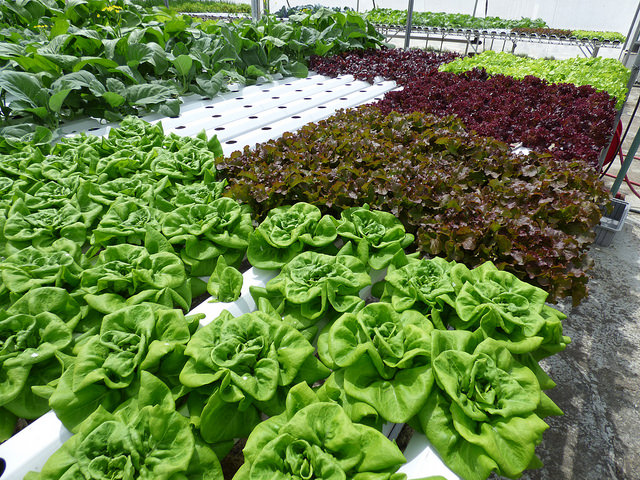
Salad greens being grown on Midway Atoll. Below we provide an overview of all the elements visible in the image: systems, nutrients, lighting, growing media and greenhouses. Image courtesy of Starr Environmental.
On this page I will attempt to cover a hydroponics overview of sorts, such that you can then make sense of the more specific information available elsewhere. Hydroponics can seem to be a hopelessly complex topic, but the basics are quite simple in principle. This summary will be chock full of information, so take your time wading through it. All the introductions are here; we'll dive deeper within each individual section.
NOTE: If you already know that you want more detail than what we can offer in this overview, check out our Hydroponics Books page for a comprehensive list of books about hydroponics. Whether you're a beginner, a small scale producer, an academic or commercial grower, you'll find something useful there.
Hydroponics Overview: Systems
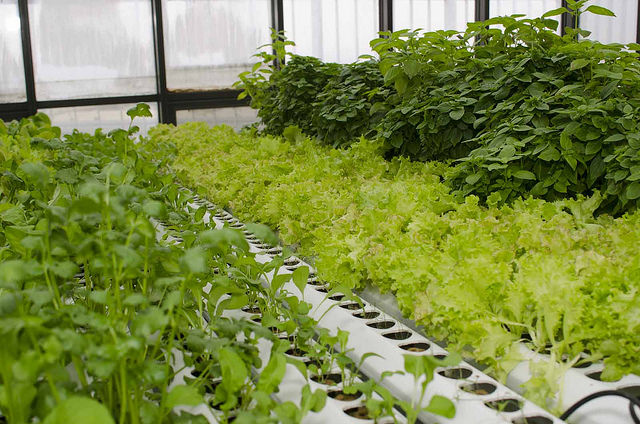
When people talk about hydroponics, they are usually referring to the general practice of growing plants in an inert growing medium, and feeding the plants via some form of nutrient solution delivered on a regular schedule. Sounds simple, right? Ahh, but the devil is in the details. There are at least half a dozen different commonly used hydroponic system designs, each one having a number of different possible variations. Some of these systems provide only the basics of plant rooting material and nutritional support. Other systems provide "the whole enchilada" in terms of nutrition, lighting, temperature control, humidity and CO2 regulation, etc. Which system is best? That is dependent upon a whole list of variables, many of which are in direct competition with each other. We are in the process of writing and entire section devoted to Hydroponic Systems so that you can see for yourself what the options are, how those options interact, and which option(s) may work best for your particular circumstances. That page includes an overview of the most common systems and the pro's and con's of each. We also provide a table listing various evaluation criteria to see how the systems compare to each other in terms of things like complexity, cost, scaleability, etc. Click here for more information.
Hydroponics Overview: Nutrient Solutions
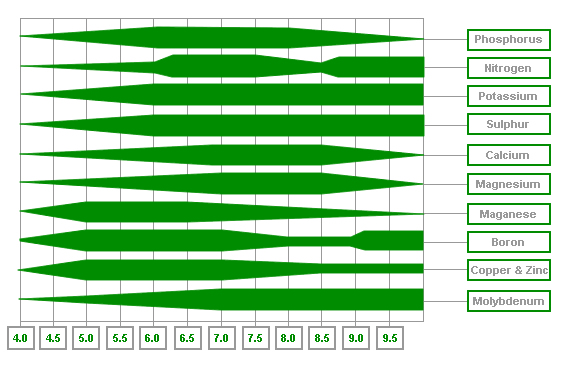
The word "hydroponics" comes from the Latin, "hydro" meaning water, and "ponics" meaning plant. So, literally, "water-plant". And that is fundamentally what hydroponics is. Raising plants not in soil, but in water, or more specifically in a water-based nutrient solution.
So what is a nutrient solution? Simply speaking, a nutrient solution is any water-based combination of macro-nutrients and micro-nutrients, in concentrations and ratios appropriate for whatever plants are being raised.
Macro-nutrientts include those most commonly used by plants, and include elements such as nitrogen (N), potassium (K), phosphorus (P), calcium (Ca), magnesium (Mg) and sulphur (S). These elements are used in relatively large amounts by plants, so naturally the plants would need more of them in either the soil or a nutrient solution. Micronutrients include elements also critical to plants, but in lesser quantities. The micronutrients are conventionally defined as boron (B), copper (Cu), iron (Fe), chloride (Cl), manganese (Mn), molybdenum (Mo) and zinc (Zu). Additional micronutrients that have received recent attention for their health implications include cobalt (Co), vanadium (V) selenium (Se) and Iodine (Io).
These nutrients are usually needed by the plant in extremely low doses, if at all. More commonly,many of these micronutrients are not needed by the plant itself so much as by the humans or animals which will be eating the plant. Selenium deficiency, for instance, is a well documented livestock management problem. If that element is not present in feed, which is the case in much of the country, it must be supplemented either orally or via injections, to ward off White Muscle Disease and other deficiency problems. Human beings also need these trace nutrients. Iodine deficiency across the so-called goiter belt of the northern US is another instance where the plant does not need the nutrient but human health is impacted by its absence. One of the great advantages of hydroponics, then, is the ability to tweak the nutrient solution to not only provide top notch nutrition for the plant, but also for whoever will be eating the plant.
The challenge, then, becomes how to do the following:
- identify those macro- and micro-nutrients needed either by the plant and/or by those who will be eating the plant
- identify the correct amounts of those nutrients needed by the plant at each stage of plant development (seedling, growth, blossom, fruitset, fruit maturation)
- determine how best to deliver those nutrients to the plant in an aqueous solution (as ions, as stable elements or molecular compounds, or even as chelated substances)
- source those nutrients and combine them in a cost-effective, safe-to-handle form. Sometimes long-term storage of dried nutrients is also a consideration, such that they can be dissolved on an as-needed basis.
- ensure that the nutrients are delivered at the correct pH for optimal uptake by the plant.
Happily, much of this information has already been figured out. A wide variety of nutrient solution research is available, ranging from general mixture guidelines to custom-tailored recipes for individual species such as lettuces, basil, tomatoes, etc. While other plant species have yet to be studied so carefully, many research sources, both academic and commercial, have published a general overview and/or summary of the nutrients needed to provide satisfactory performance across a wide spectrum of plant types. Sources for these nutrients also vary widely. Most hydroponic producers use commercially available nutrient solution powders, to be dissolve just prior to use into measured quantities of water. More advanced nutrient solutions will consist of an A component and B component, intended to be stored separately and combined at time of use. Finally, a variety of natural nutrients can be used, derived from sources such as animal manures. These nutrients can be less expensive to source yet have more variability, as well as both chemical compounds and biological components that may either benefit or complicate a hydroponic feeding regimen.
This section is possibly the most technically complex chapter of hydroponics operation. We are working to build an entire section of the website to help sort out all the different nutrients, how they fit together, and how to fine tune your own system to your own needs. We'll also provide an overview of nutrient solution options,ranging from DIY recipes to purchased products. Please be patient as we build out that section, because we want to take our time and do a good job of it. We'll provide a link here when it's ready.
Hydroponics Overview: Growing Media
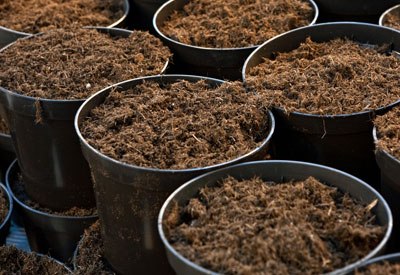
Hydroponic plants may not need soil to feed them, since those nutrients are provided in the nutrient solution. But the plants still need some way to anchor themselves such that they don't fall over. Additionally, hydroponic plants still develop roots which are a prime conduit to deliver those nutrients to the rest of the plant. Hydroponics provides both the anchoring, and the nutrient solution delivery, via the growing media.
Growing media sounds complicated but it can be as simple as gravel or sand. It can be as involved as manmade materials such as rockwool or hydroton. Whatever material is used, it needs to meet several criteria:
1) it must be massive enough to anchor the roots such that the plant doesn't sink, fall over or blow out. That will vary by the plant type. Lightweight crops such as lettuces don't need much growing media because their roots are shallow, the plants are short, and they face little risk of either falling over or blowing out of the soil. Tomatoes on the other hand must have substantial growing media, both in mass and in volume, because the plants are potentially large, long-lived, and tall.
2) The material must be porous enough to allow for free movement of water and atmosphere, yet be able to hold moisture for at least a period of time such that roots don't dry out between irrigation cycles. Irrigation cycles can be as frequent as once per minute with drip irrigation systems, or as infrequently as once every two to three hours with flood-and-drain type systems.
3) Weight can be an issue when planting containers are not at ground level but rather are raised on benches.
4) Cost and reusability can also be issues. Small operations with minor crop turnover rates may only need to buy or source small quantities of growing media. But operations which have high crop turnover, for instance a farm raising three-week-old baby greens for market, might need to reuse or replace the growing media. So recycling that growing media, or paying to replace it, suddenly becomes quite an issue.
Happily, a wide variety of growing media is available to meet whatever needs a producer has. Even if a producer has a wide mix of crops, each needing different growing media, they can typically be mixed and matched for an optimized operation. We have recently completed a Growing Media section of the website, to review the different growing media options, and their various pro's and con's. We include an overview of the different materials, how they perform in different situations, and any cautions prior to using them. Click here to visit that section and review your options.
Hydroponics Overview: Grow Lights
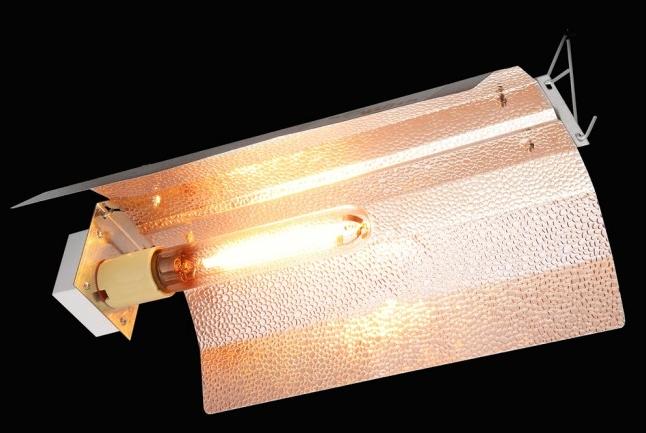
High Intensity Discharge (HID) lighting is a central feature of hydroponics. Not because hydroponics by itself requires artificial lighting rather than sunlight. But rather because hydroponics is often used where growing conditions are generally already challenging - indoor gardens, shaded growing areas, short-season or short-day growing regions, etc. Since sunlight is as critical to good plant growth as water, good air flow and nutrients, it then is a natural complement to other supplementation efforts.
Several forms of HID lighting are in common use:
1) Metal halide (MH) lamps are used for broad spectrum growing during vegetative stages, and/or for those crops such as salad greens and herbs where the leaf material is the desired crop. These lamps generally occur in various wattage ratings from 100w to 1000w configurations, and require a separate ballast.
2) High pressure sodium (HPS) lamps are very common with hydroponics systems where fruiting bodies, such as tomatoes or peppers, are the market crop. HPS lamps provide a slightly different range of wavelengths than MH lamps, and that different spectrum is targeted to the needs of fruiting plants. These lamps also generally need separate ballasts and are available in a range of wattage.
3) LED lights have only recently come onto the hydroponics scene, but they offer a variety of intriguing advantages. Each LED is a tiny lamp, so an LED array is simply a bunch of those LED lamps all put together in various configurations. First, they can be placed much closer to seedlings and low-growing plants because they don't throw off as much heat as other lighting methods. Secondly, they don't have to all stay above the plant. Small groups can be arrayed alongside or even underneath plants. Third, a wide range of wavelengths are available so a custom spectrum can be created. Their only disadvantage so far is the cost. Since they are so new, they are still rather pricey.
4) Fluorescent tubes are still widely used. They are inexpensive, commonly available, familiar, can operate in low temperatures and sealed against the elements for outside use. Replacement tubes are cheap. But watt for watt, they don't put out nearly as much light as the other forms of HID lighting, and some would not include them in the HID category for that reason. Yet they are so common, they warrant a place in the discussion. They are particularly suited for seedlings since they provide a full spectrum light with almost no heat buildup.
As with nutrient solutions and growing media, each form of HID lighting offers a variety of advantages and disadvantages. Different growers will want different lights at different times. And growers may only want to supplement the natural sunlight they already have available. So there are a variety of considerations before choosing a light source.
If you would like to read more detail about HID lighting types and uses, we have written a whole Grow Lights section just on the various bulb characteristics. That section includes an overview of the most common lighting solutions in use, and their various advantages and disadvantages. Click here for our comparison table of HID lighting and information pages.
Hydroponics Overview: Controlled Environment Agriculture
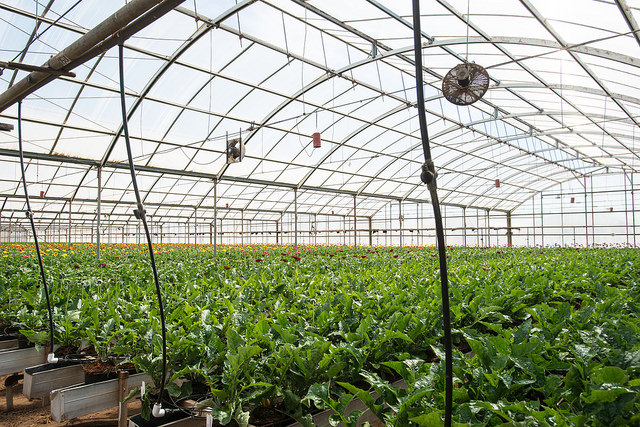
Controlled Environment Agriculture is where all the pieces come together: temperature, lighting, growing media, nutrition, pest/disease control, pollination and even worker comfort and chores efficiency all come into play. If that sounds really complicated or expensive, it can be. However, growers have come up with a lot of variations on this theme, some of which are extremely low-tech and low-cost, while delivering a surprising number of benefits. Not all growers will be interested in this comprehensive approach, to be sure. However, it is a natural extension of the desire to optimize our plants' growing conditions. As such, it merits its own section where we can look at all the options, methods, equipment, pro's and con's. From there, any given grower (including you!) will have a much better idea of which elements to pursue, and which are not applicable to your particular situation. We've just launched that Controlled Environment Agriculture section and we're still writing various portions of it. Click here to get started.
Hydroponic Overview: Books

What overview of any topic would be complete without a list of helpful books? We're huge fans of reading books written by recognized experts in any given field, and we have collected quite a few books about hydroponics over the years. Some of them were not particularly helpful, but others were (and remain) priceless sources of information. We share these finds with you on our Hydroponic Books page, so that you can hit the ground running in any given category.
Additional Information
While we work on all the above topics, we would like to share a wonderful overview which we found online courtesy of Colorado State University. Their free hydroponics PDF provides a fairly comprehensive guide to all the above topics, how they work, and how they fit together. While we eventually wish to provide a great deal more information than what's available in the PDF, it provides a very good starting point.